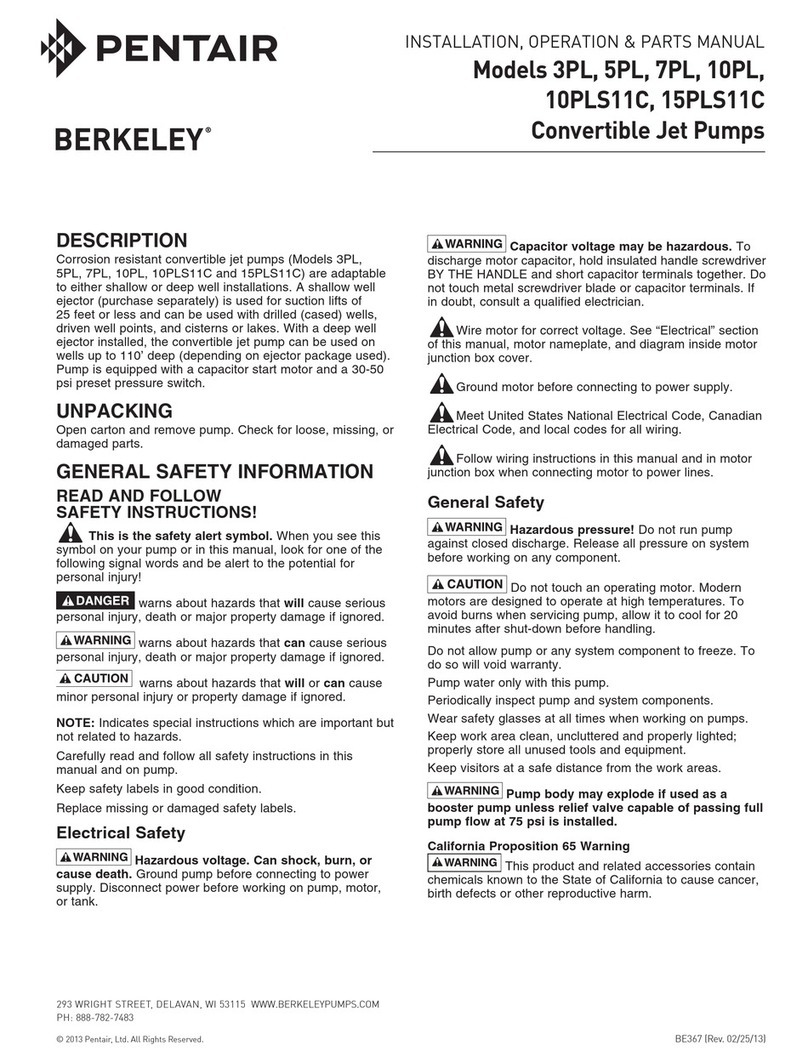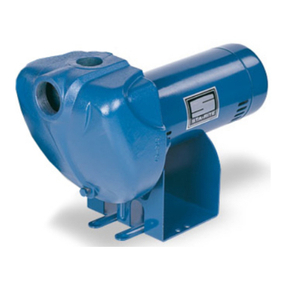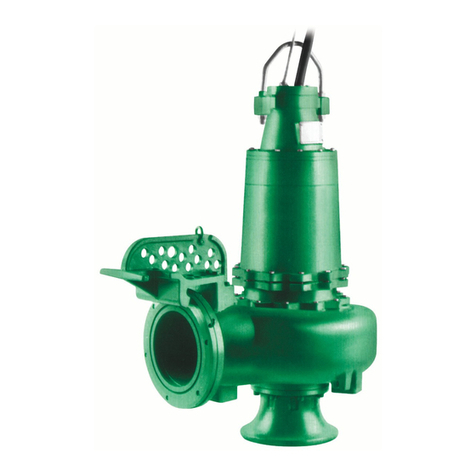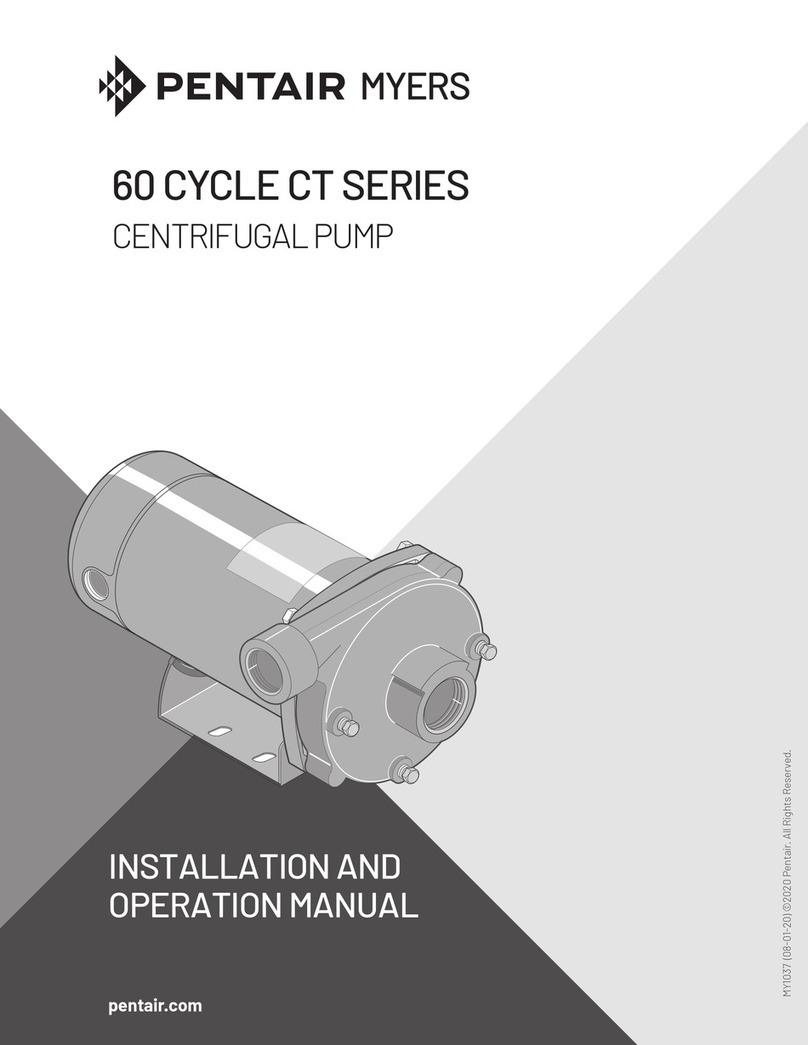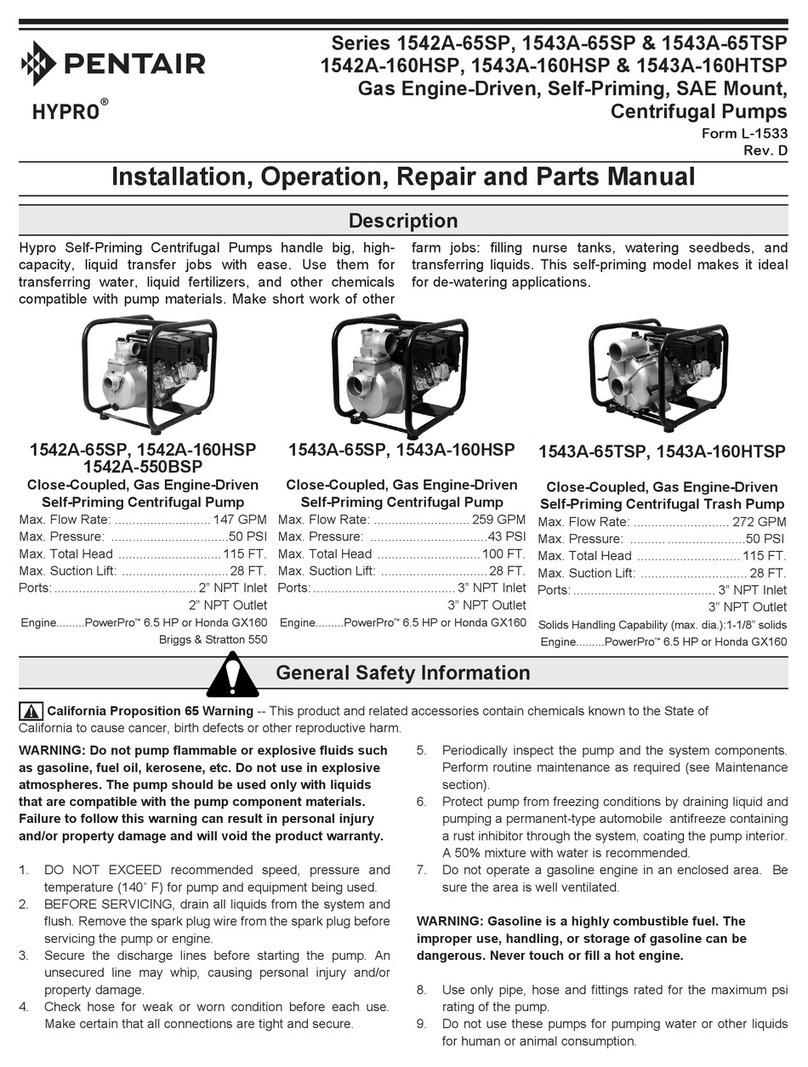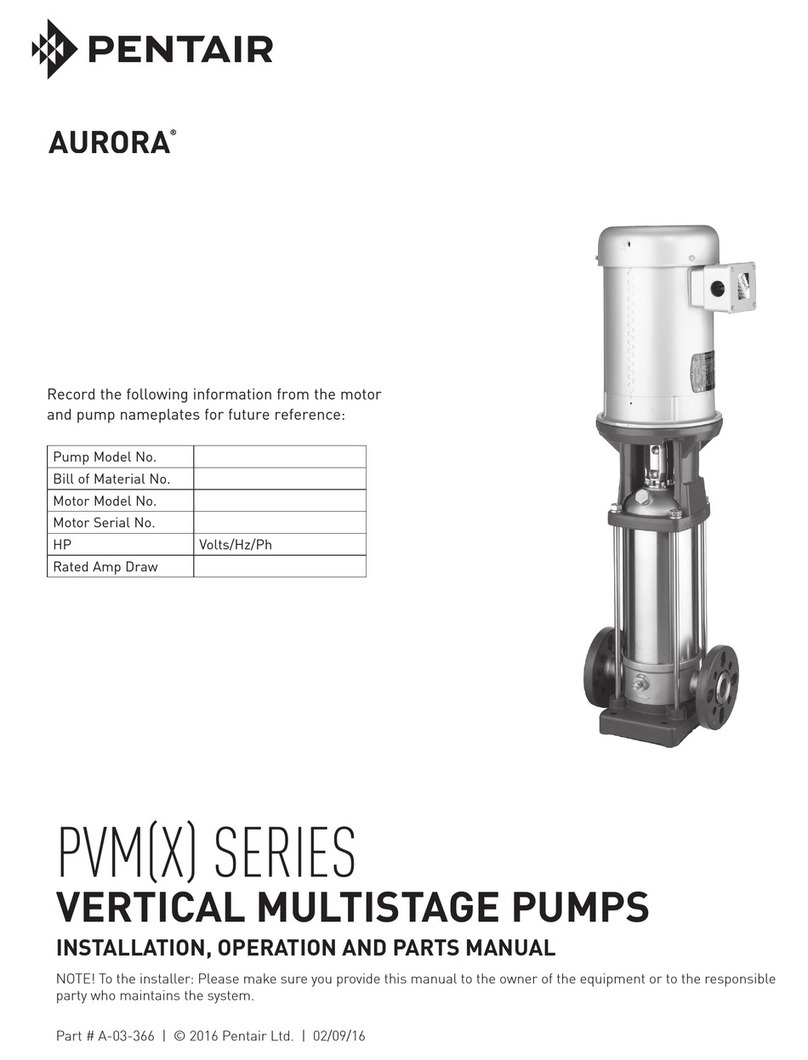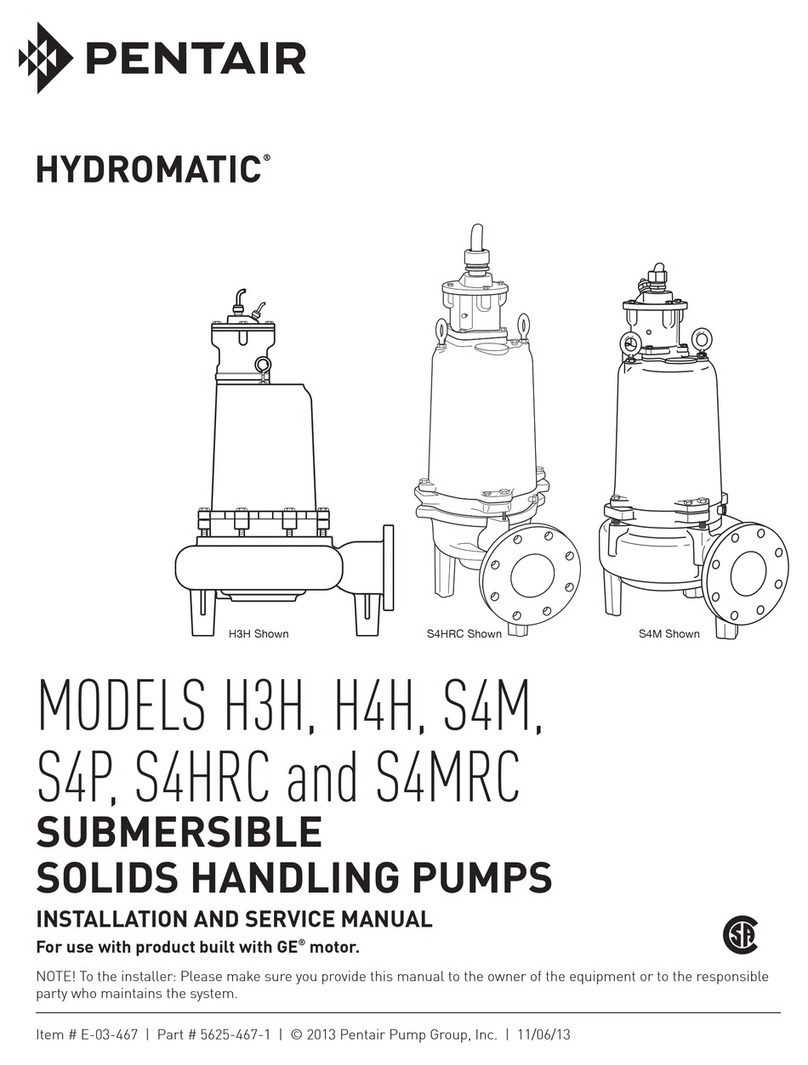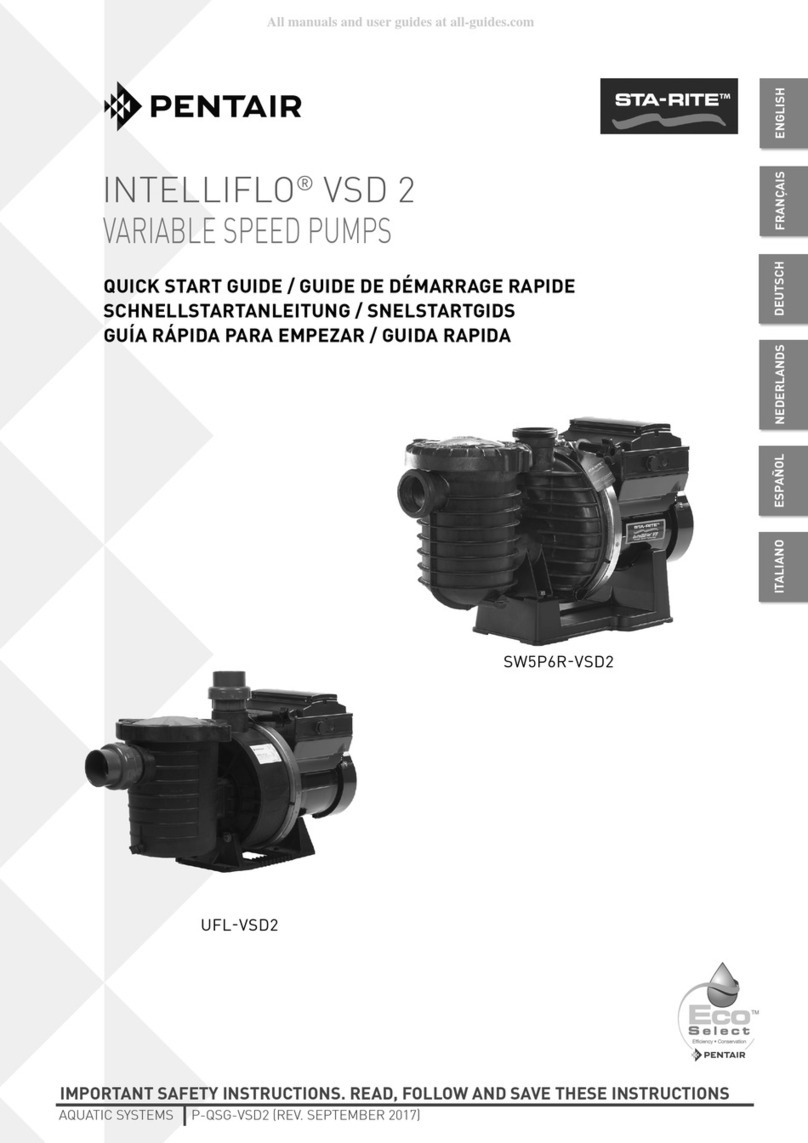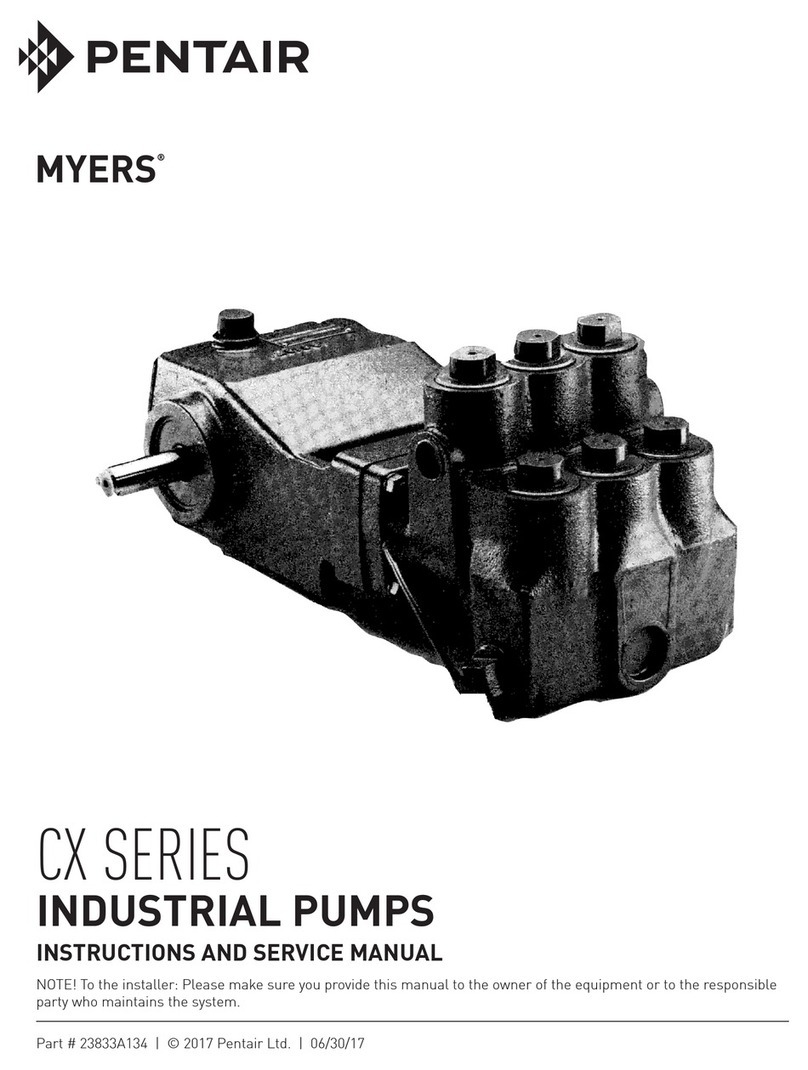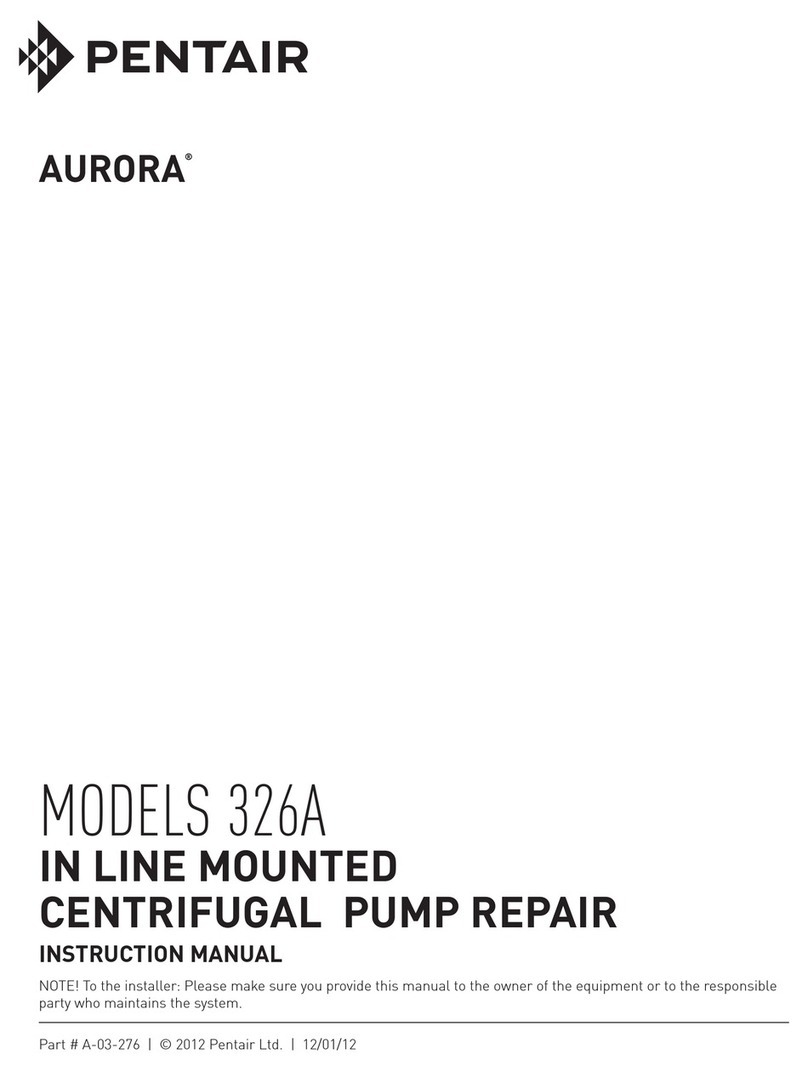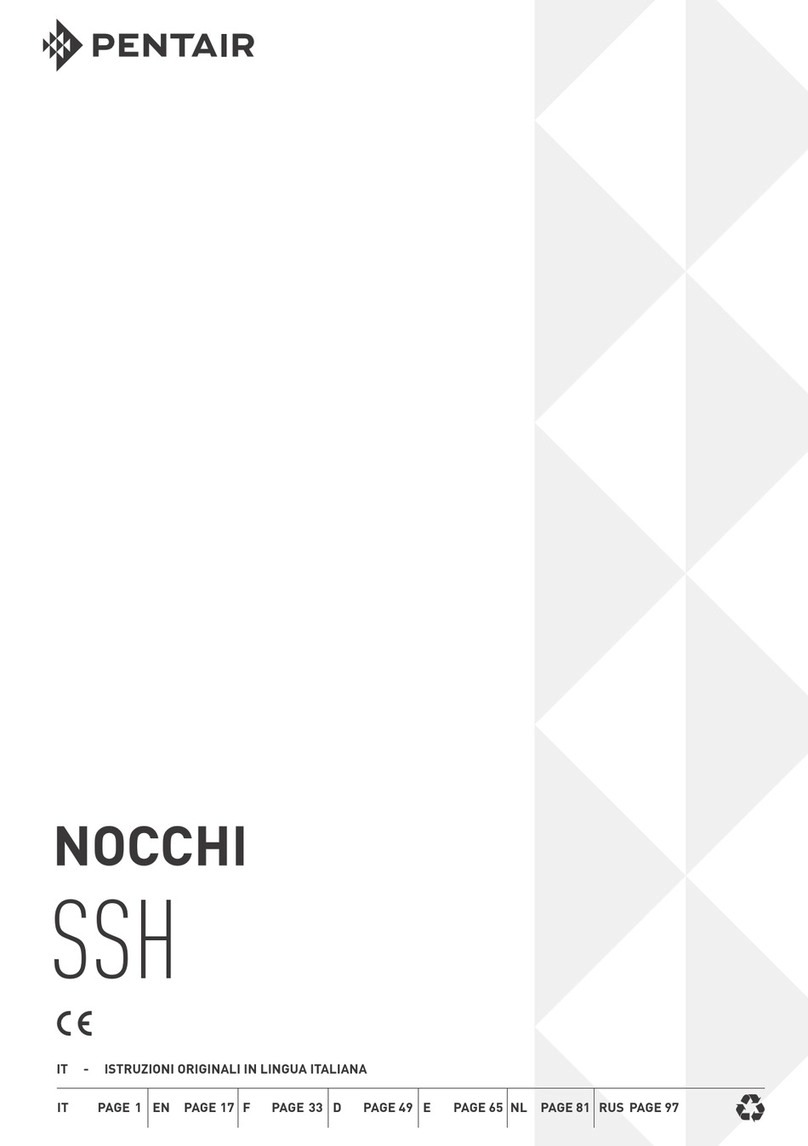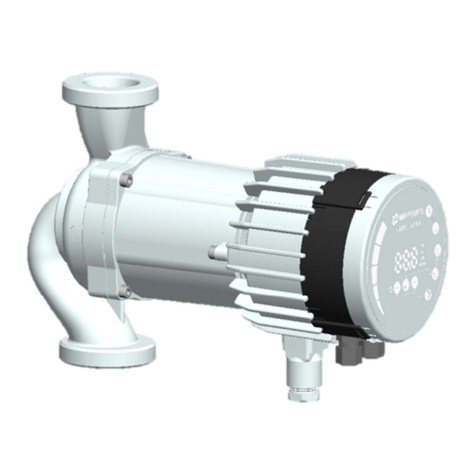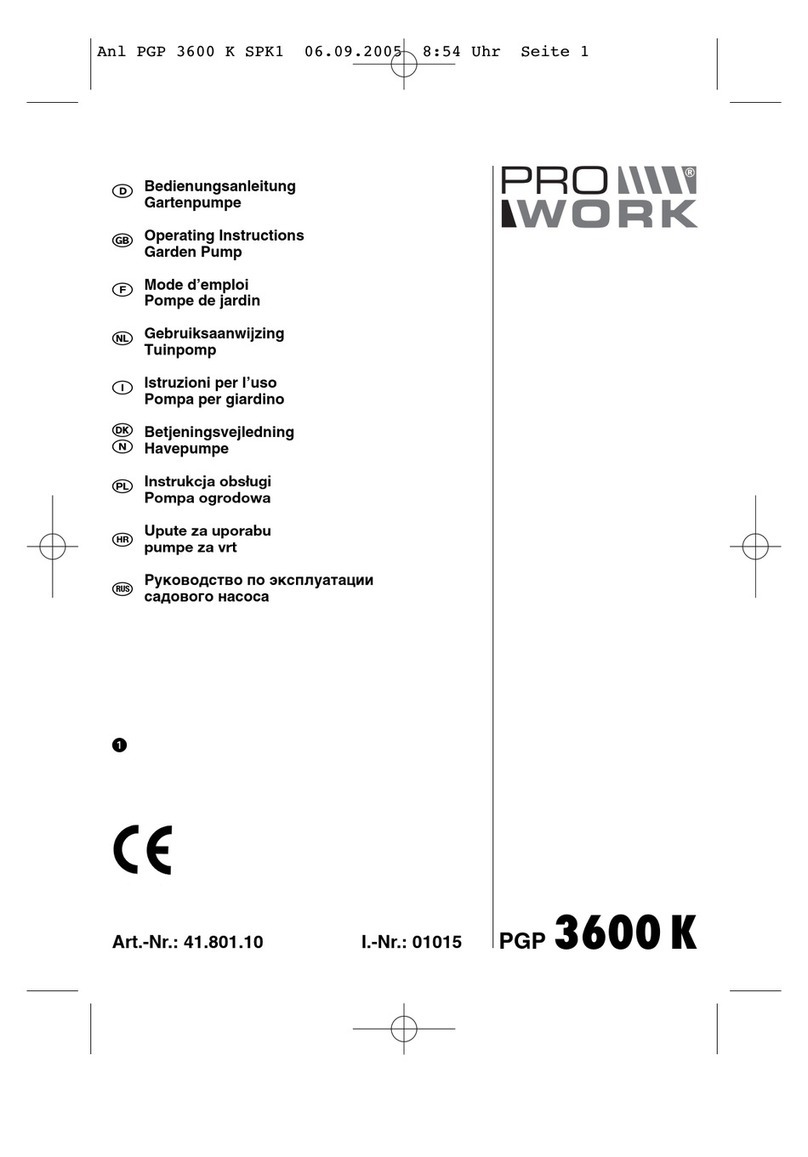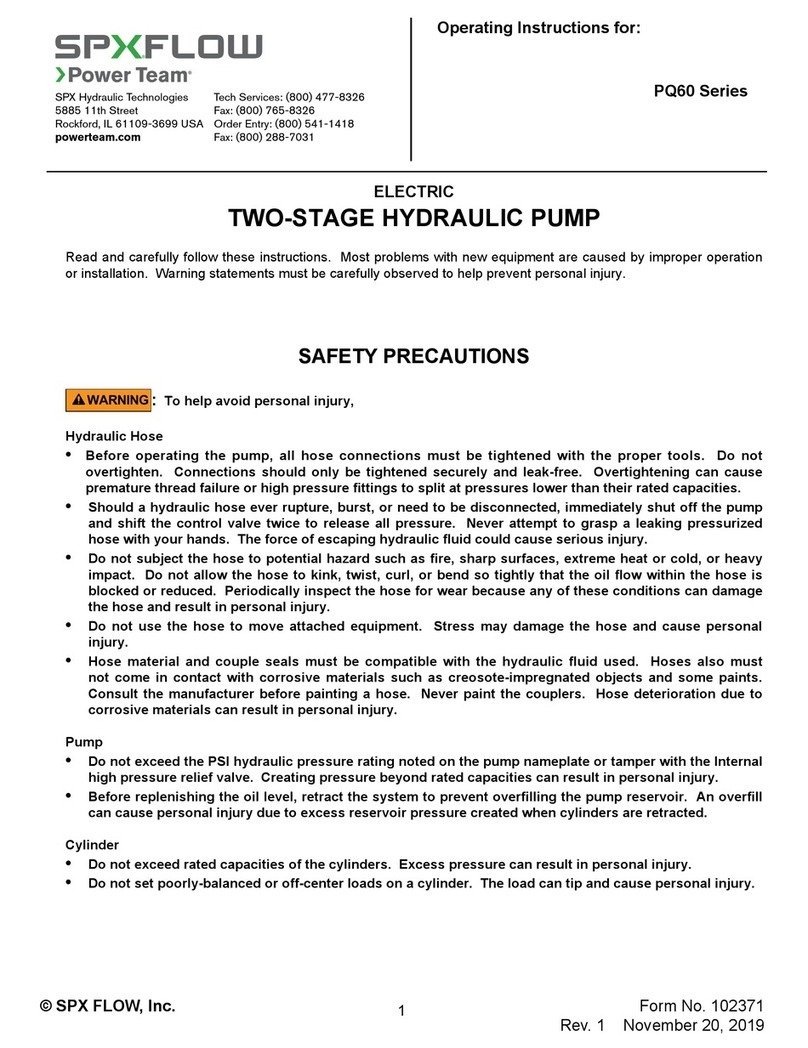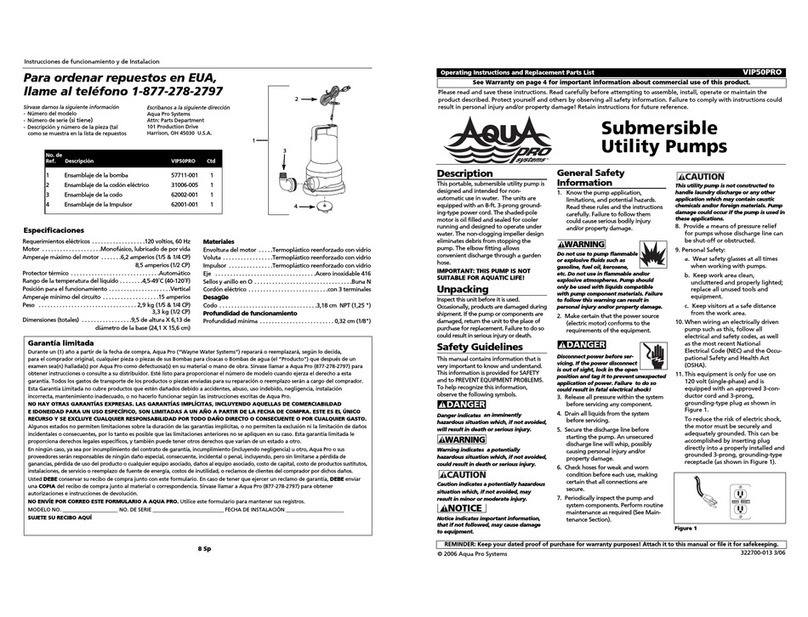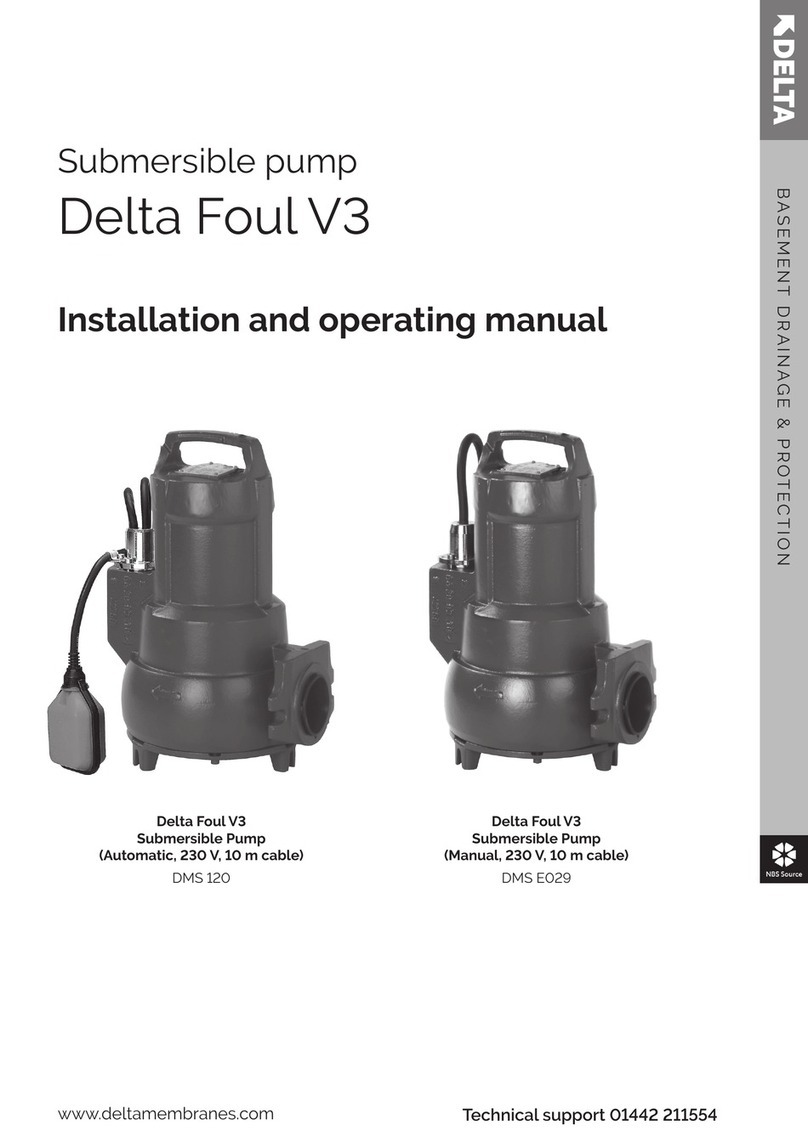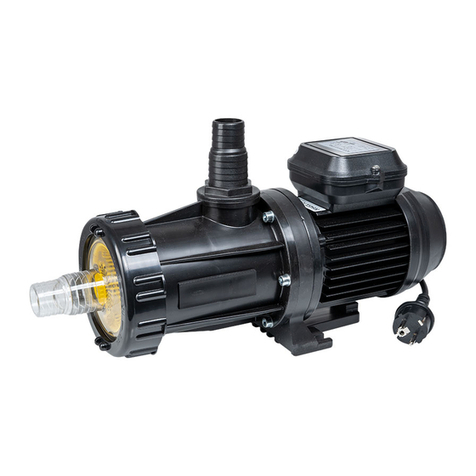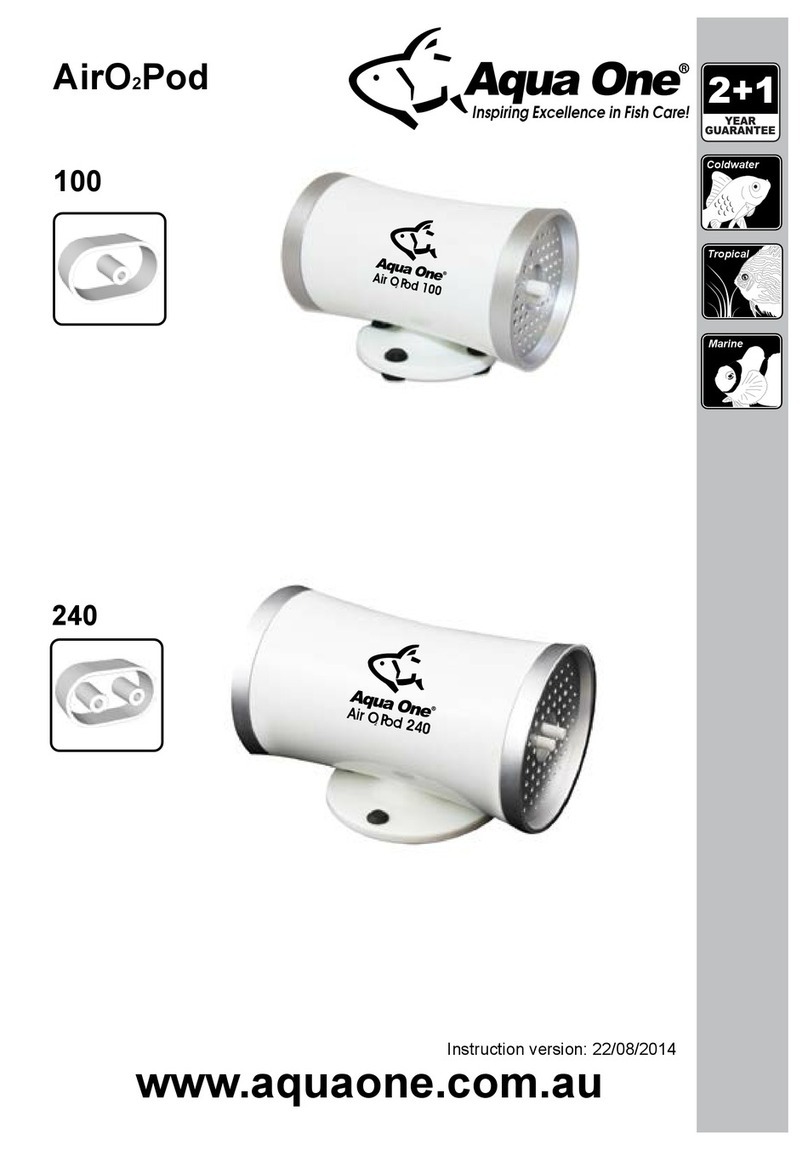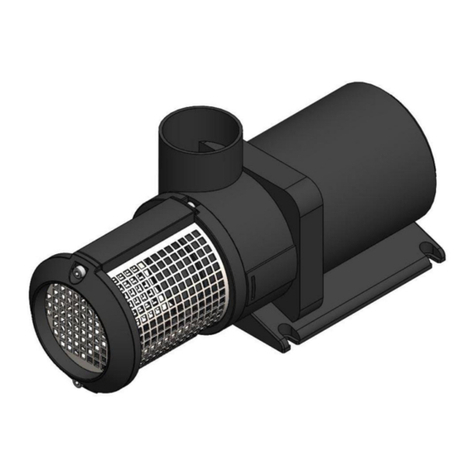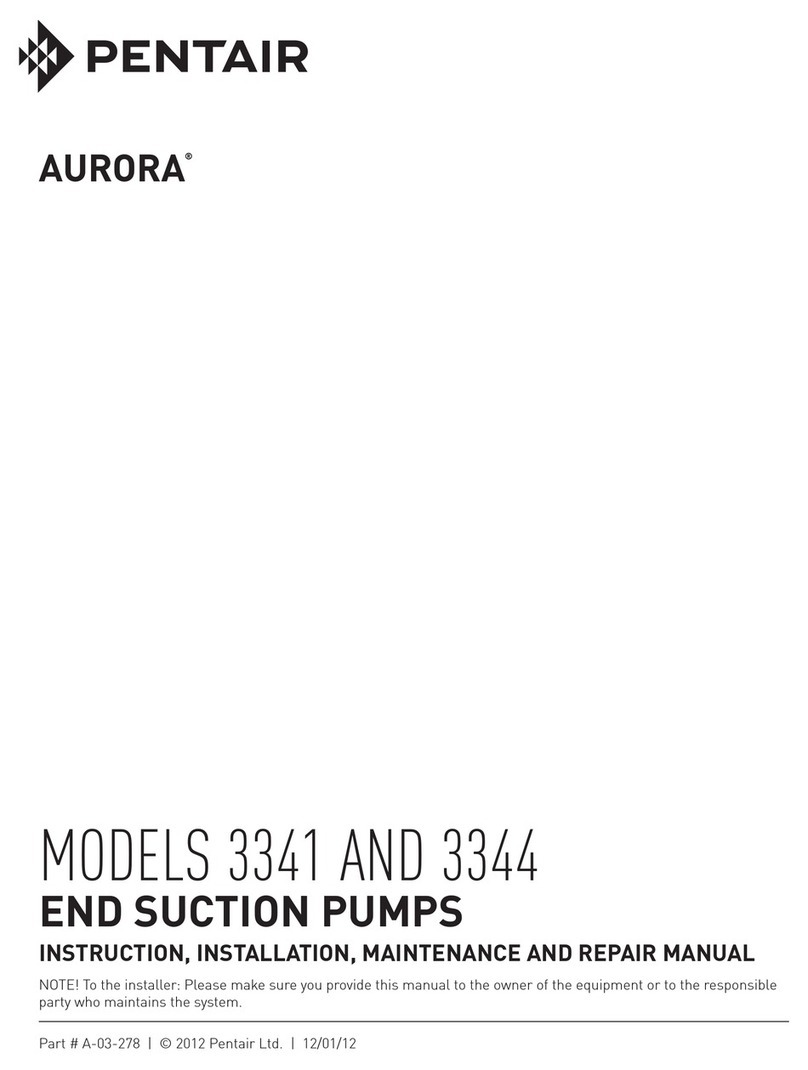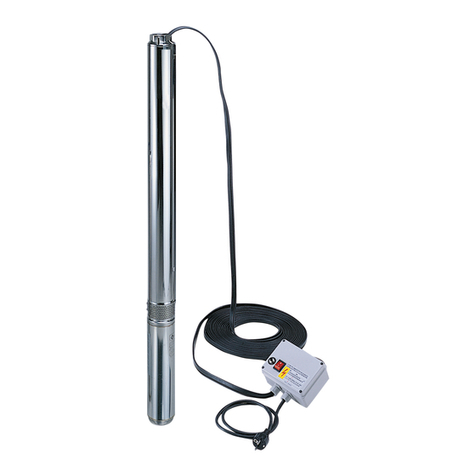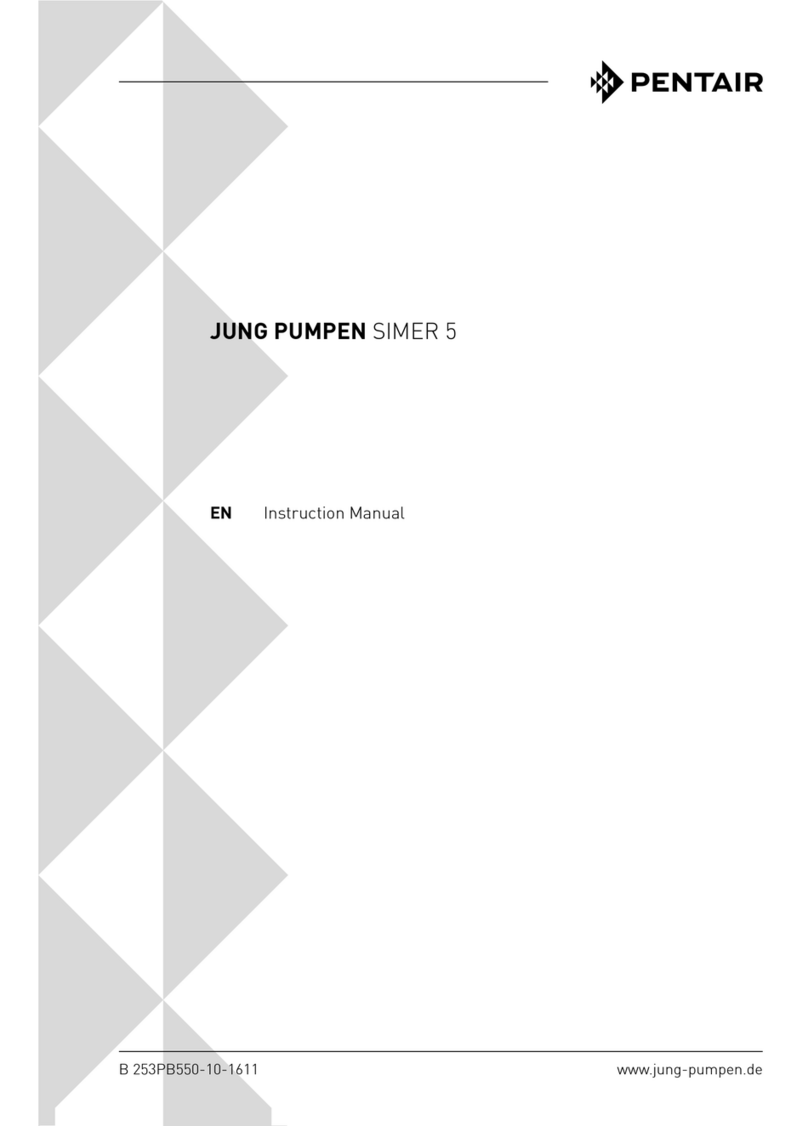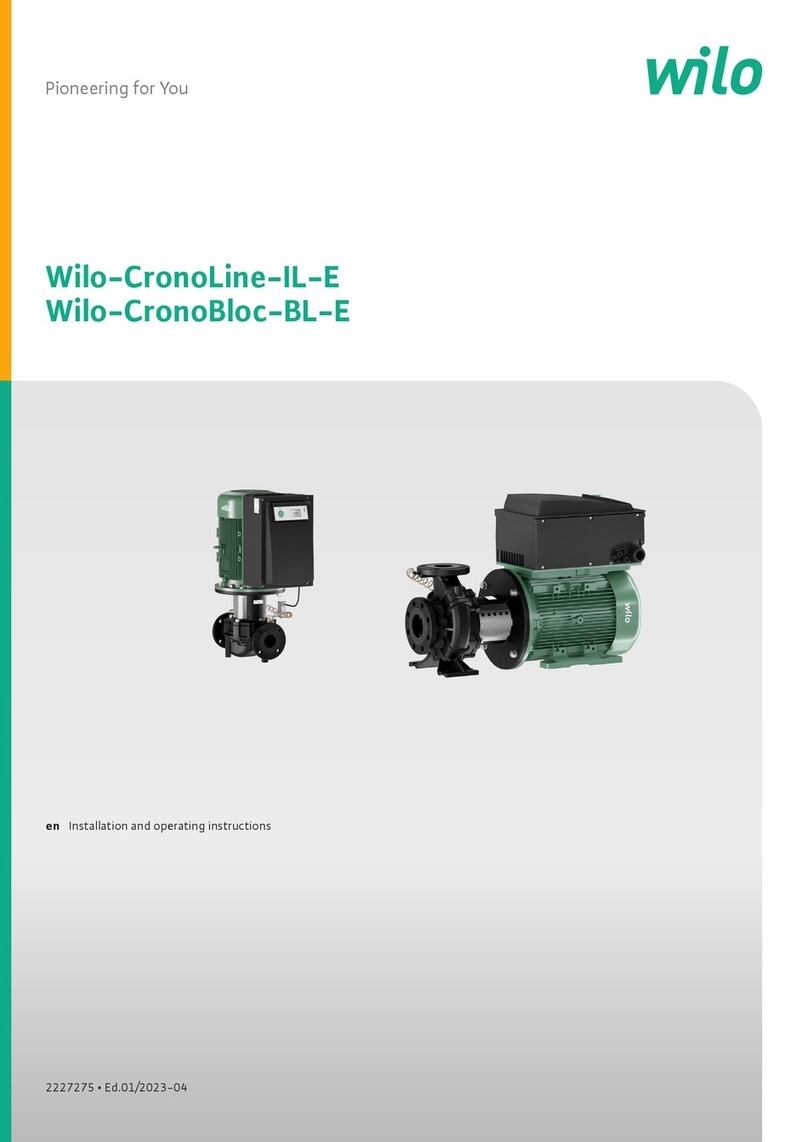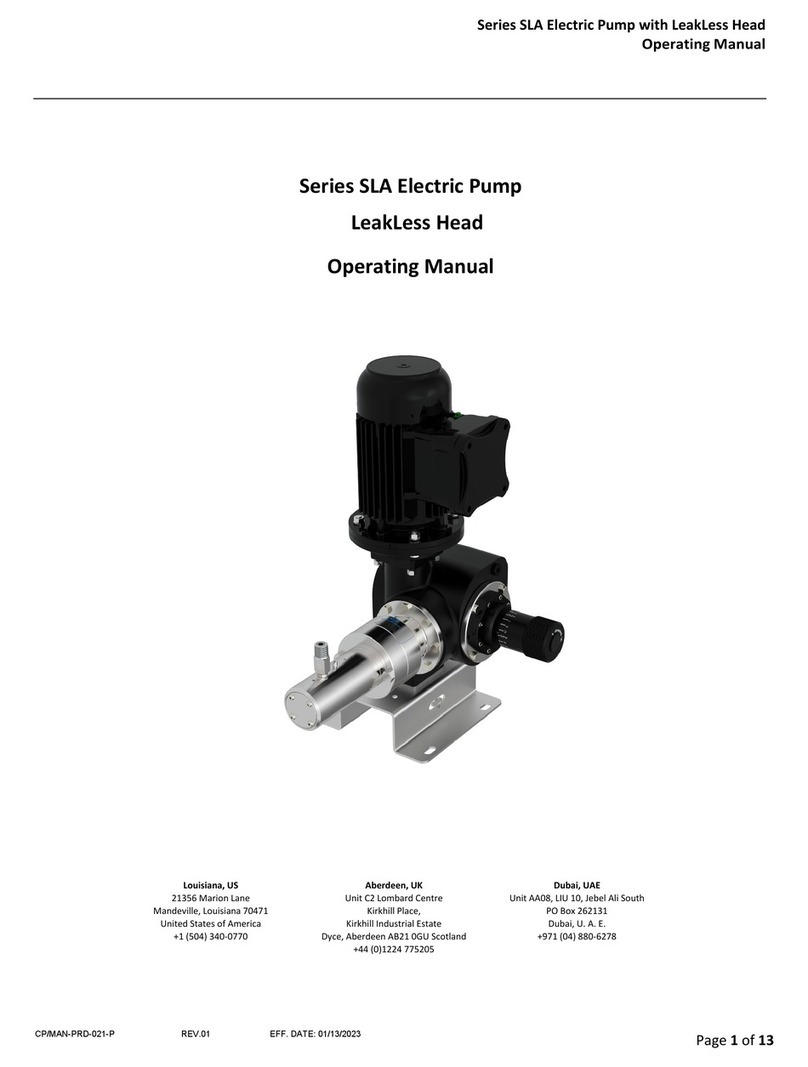
3
GENERAL SAFETY
PRECAUTIONS
❚ When the vessel is not in use, the
main power switch should be off and
seacock valves should be CLOSED. How-
ever, if left afloat, the bilge pump should
still have power.
❚ Never operate the engine or electri-
cal equipment if fuel vapor is detected.
Locate the source and vent properly.
❚ Electrical connections should be
soldered and insulated to prevent shorts
and corrosion. Wiring should be routed
away from areas prone to water, heat
and excess moisture.
WINTERIZING
Refer to the boat owner’s manual for
specific winterizing instructions. If wa-
ter is allowed to freeze in the system, se-
rious damage to the plumbing and pump
may occur. Failures of this type will void
the warranty. The best guarantee against
damage is to completely drain the pump
and perform the following:
1. Drain the water tank. If the tank
doesn't have a drain valve, open the
spray nozzle allowing the pump to oper-
ate until the tank is empty.
2. Allow the pump to purge the water
from the plumbing, and then turn the
pump “OFF”.
3. Using a pan to catch the remain-
ing water, remove the plumbing at the
pump's inlet/outlet ports. Turn the
pump “ON”, allowing it to operate until
the water is expelled. Turn OFF the
power to the pump once the plumbing
is emptied. Do not reconnect the pump
plumbing. Make a note at tank filler as a
reminder: "Plumbing is disconnected".
STRAINER / FILTRATION
Installation of a 50-mesh minimum
strainer, such as SHURFLO series 253,
is recommended to prevent debris from
entering the pump.
CAUTION: The strainer must be
mounted above the outside water line
to prevent water from siphoning during
cleaning. Mount the strainer where it
can be inspected and cleaned easily
without closing the seacock valve.
MAINTENANCE
Normal pump maintenance is all that
is needed: Checking and cleaning of
the strainer, normal sanitizing and
winterizing and occasionally check-
ing all plumbing hardware and fittings
for tightness. Lack of sanitizing is the
number one reason for premature pump
failure and poor performance over time.
Lack of sanitizing will cause scale build-
up on the diaphragm and valves, causing
low flow and leak back (occasional
pump cycling with spray nozzle closed).
TROUBLESHOOTING
Vibration induced by driving can loosen
plumbing, strainers and pump hard-
ware. Check for system components
that are loose. Also, refer to the chart
below for trouble-shooting tips.
PUMP WILL NOT START/BLOWS
CIRCUIT
√ Electrical connections, fuse or
breaker, main switch, and ground
connection.
√ Is the motor hot? Thermal breaker
may have triggered; it will reset
when cool.
√ Is voltage present at the switch?
Bypass pressure sw. Does the pump
operate?
√ Charging System for correct voltage
(±10%) and good ground.
√ For an open or grounded circuit, or
motor; or improperly sized wire.
√ For seized or locked diaphragm as-
sembly (water frozen?).
WILL NOT PRIME/SPUTTERS
(No discharge/Motor runs)
√ Is the strainer clogged with debris?
√ Is there water in the tank, or has air
collected in the hot water heater?
√ Is the inlet tubing/plumbing suck-
ing in air at plumbing connections
(vacuum leak)?
√ Is inlet/outlet plumbing severely
restricted or kinked? Restrictive
valves?
√ Proper voltage with the pump oper-
ating (±10%).
√ For debris in pump inlet/outlet
valves or swollen/dry valves.
√ Pump housing for cracks or loose
drive assembly screws.
RAPID CYCLING
√ For restrictive plumbing and flow re-
strictions in faucets/shower heads.
√ Water filter/purifier should be on
separate feed line.
√ Shut-off pressure set too low.
PUMP WILL NOT SHUT-OFF / RUNS
WHEN NOZZLE IS CLOSED
√ Output side (pressure) plumbing for
leaks, and inspect for leaky valves
or toilet.
√ For air trapped in outlet side (water
heater) or pump head.
√ For correct voltage to pump (±10%).
√ For loose drive assembly or pump
head screws.
√ Are the valves held open by debris
or is the rubber swollen?
√ Pressure switch operation. By-pass
set higher than shut-off.
NOISY OR ROUGH OPERATION
√ For plumbing which may have
vibrated loose.
√ For a restricted inlet (clogged
strainer, kinked hose, restrictive
valves).
√ Is the pump plumbed with rigid pipe
causing noise to transmit?
√ Does the mounting surface amplify
noise (flexible)? Does it bang like a
drum?
√ For mounting feet that are loose or
are compressed too tight.
√ For air in the system. Check all
fixtures for air and bleed system.
√ The motor with pump head re-
moved. Is noise from motor or
pump head?
LEAKS FROM PUMP HEAD OR SWITCH
√ For loose screws at switch or pump
head.
√ Switch diaphragm ruptured or
pinched.
√ For punctured diaphragm if water is
present in drive assembly.

